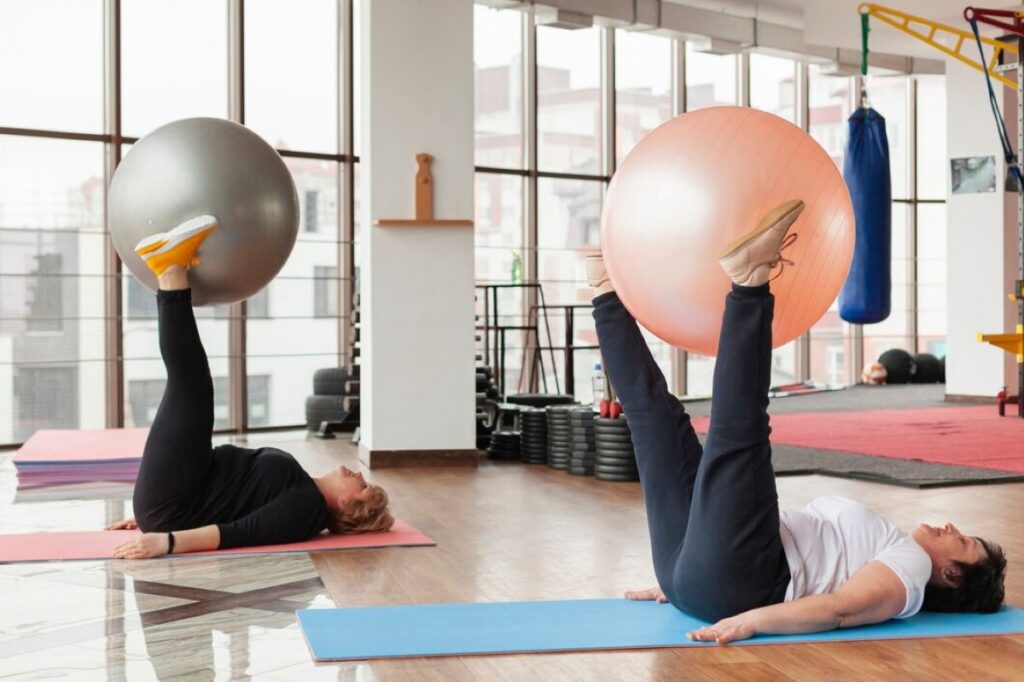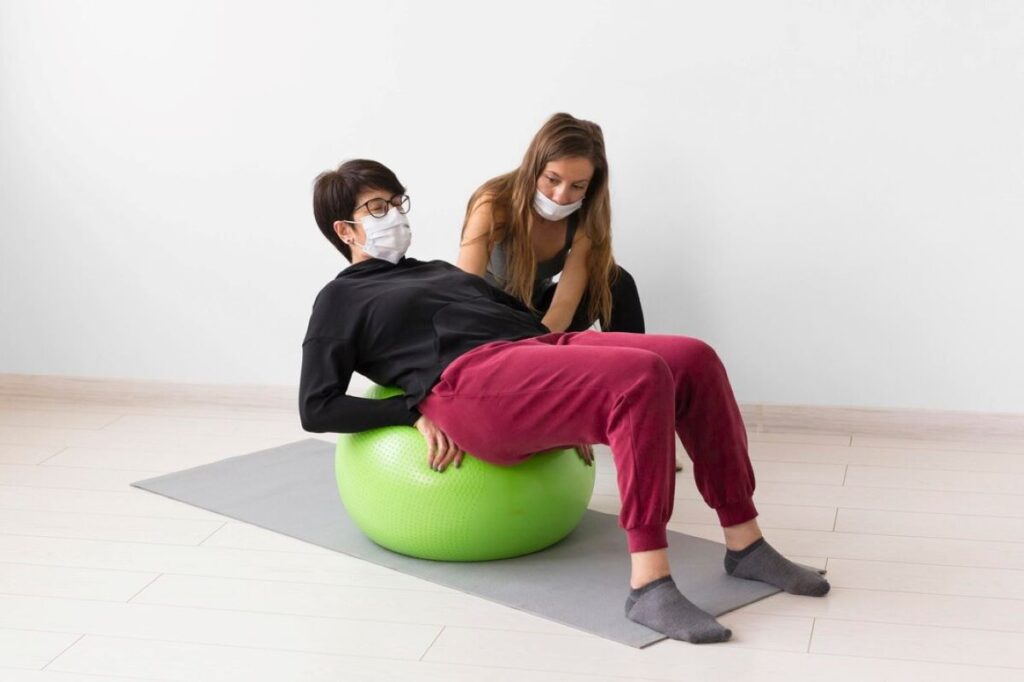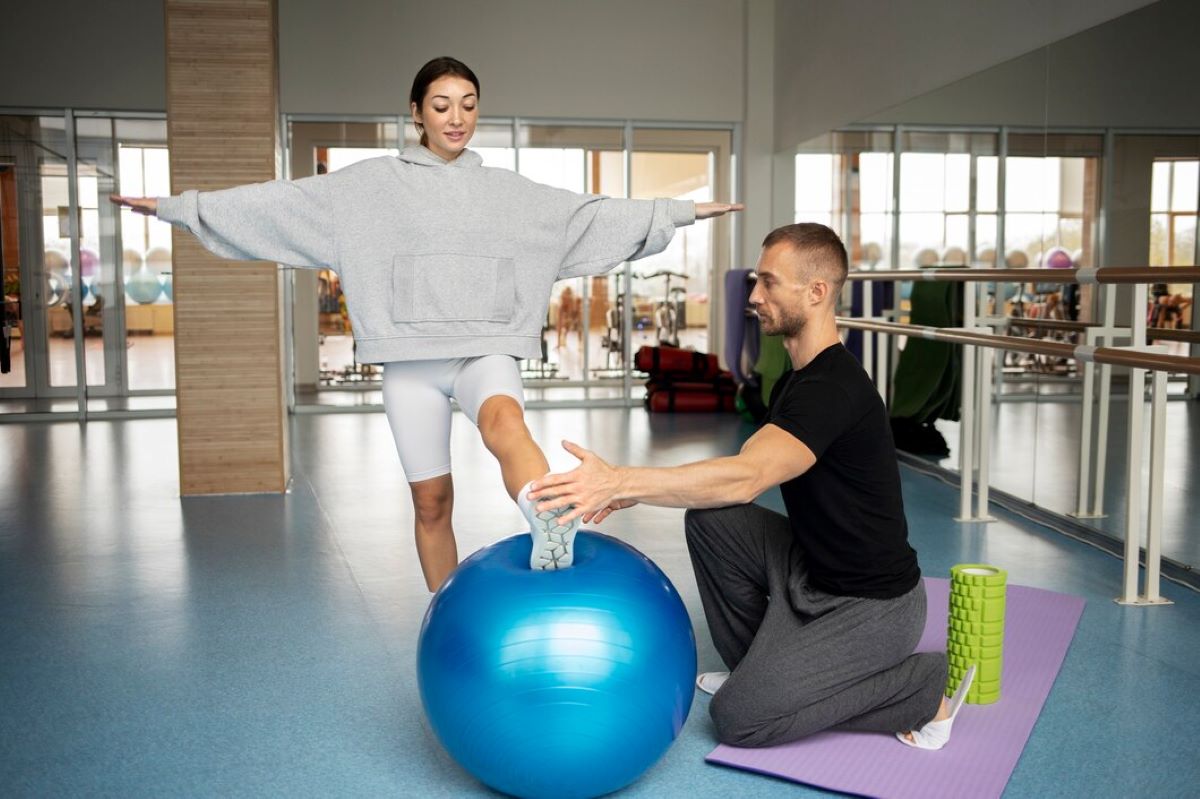The small Pilates ball, often referred to as a stability ball or mini ball, is an excellent tool for enhancing core strength. This versatile piece of equipment can be integrated into various exercises to engage the abdominal muscles, improve balance, and promote overall stability. In this article, we will explore the benefits of using a small Pilates ball, effective exercises to incorporate into your routine, and tips for maximising your workouts.
Understanding the Core
The core is more than just the abdominal muscles; it encompasses a complex group of muscles that stabilise the spine and pelvis. This includes the rectus abdominis, obliques, transverse abdominis, and the muscles of the lower back. A strong core is essential not only for athletic performance but also for daily activities, as it supports proper posture and reduces the risk of injury.
The Importance of Core Strength
Core strength plays a pivotal role in maintaining balance and stability. It is crucial for athletes, as it enhances performance in sports that require agility and power. However, core strength is equally important for everyday activities such as lifting, bending, and even sitting for prolonged periods. A well-developed core can alleviate back pain, improve posture, and contribute to overall physical health.
Benefits of Using a Small Pilates Ball
Incorporating a small Pilates ball into your workouts offers numerous advantages. Firstly, it adds an element of instability, which forces the core muscles to engage more actively to maintain balance. This increased engagement leads to greater muscle activation compared to traditional exercises performed on a stable surface.
Secondly, the ball can help improve flexibility and range of motion. Many exercises performed with the ball require a full range of motion, which can enhance flexibility in the muscles and joints. Lastly, using a small Pilates ball can make workouts more enjoyable and varied, helping to keep motivation levels high.
Moreover, the small Pilates ball can be an excellent tool for rehabilitation and injury prevention. Its use encourages proper alignment and body awareness, which is particularly beneficial for individuals recovering from injuries or those with chronic pain conditions. By integrating the ball into rehabilitation exercises, one can gently strengthen the core while ensuring that movements remain controlled and safe. This approach not only aids recovery but also empowers individuals to take an active role in their health and fitness journey.
Additionally, the versatility of the small Pilates ball allows for a wide range of exercises that can target different muscle groups. From traditional Pilates moves to creative adaptations, the ball can be used for everything from strengthening the core to enhancing lower body workouts. This adaptability makes it a fantastic addition to any fitness routine, catering to various fitness levels and preferences. Whether you are a seasoned athlete or a beginner, the small Pilates ball can provide a fresh and engaging way to challenge your body and keep your workouts dynamic.
Effective Exercises with a Small Pilates Ball
Now that the benefits of using a small Pilates ball have been established, it’s time to explore some effective exercises that can be easily integrated into a core-strengthening routine.
1. Ball Pass
The ball pass is a fantastic exercise for targeting the entire core. To perform this exercise, lie on your back with your legs extended and hold the small Pilates ball between your hands. Raise your arms and legs simultaneously, passing the ball from your hands to your feet. Lower your arms and legs back to the starting position and repeat. This exercise not only strengthens the core but also improves coordination. As you become more proficient, try to increase the number of repetitions or hold the ball for a moment longer during the transfer, which will further challenge your stability and control.

2. Wall Squats with Ball
For this exercise, place the small Pilates ball between your lower back and a wall. Stand with your feet shoulder-width apart and slowly lower your body into a squat position while keeping your back pressed against the ball. Hold the squat for a few seconds before returning to the starting position. This exercise engages the core while also working the legs and glutes, providing a comprehensive lower body workout. To enhance the effectiveness of this exercise, consider incorporating arm movements, such as raising your arms overhead as you squat, which will not only engage your upper body but also promote better posture and alignment throughout the movement.
3. Plank with Ball Roll
Begin in a plank position with your forearms resting on the small Pilates ball. Ensure your body forms a straight line from head to heels. Hold this position for a few seconds before rolling the ball slightly forward and back, engaging your core throughout the movement. This exercise challenges the stability of the core and enhances overall strength. For an added challenge, try to alternate lifting one leg off the ground while maintaining the plank position, which will further activate your stabilising muscles and improve balance. Additionally, you can increase the duration of the hold as your strength improves, turning this exercise into a dynamic core workout that can be adjusted to suit your fitness level.
Tips for Maximising Your Core Workouts
To get the most out of your workouts with a small Pilates ball, consider the following tips:
1. Focus on Form
Maintaining proper form is crucial for maximising the effectiveness of each exercise and preventing injury. Ensure that your movements are controlled and deliberate, and avoid rushing through the exercises. Engaging the core throughout each movement will enhance the benefits and lead to better results.
2. Incorporate Variety
To keep your workouts engaging and prevent plateaus, incorporate a variety of exercises that target different muscle groups. Mixing up your routine not only keeps things interesting but also ensures that all areas of the core are being effectively worked.
3. Gradually Increase Intensity
As your core strength improves, consider increasing the intensity of your workouts. This can be achieved by adding more repetitions, increasing the duration of each hold, or incorporating more challenging variations of exercises. Progressing gradually will help to avoid injury and ensure continued improvement. You may like to visit https://www.fitnesseducation.edu.au/blog/fitness/best-exercises-to-strengthen-your-core/to get more about the best exercises to strengthen your core.
Creating a Balanced Core Workout Routine
A well-rounded core workout routine should include exercises that target all areas of the core. Here’s a sample routine that utilises a small Pilates ball:
Warm-Up
Begin with a 5-10 minute warm-up to prepare the body for exercise. This could include dynamic stretches, such as torso twists and leg swings, to activate the core and increase blood flow to the muscles.
Main Workout
- Ball Pass: 3 sets of 10-15 repetitions
- Wall Squats with Ball: 3 sets of 10-12 repetitions
- Plank with Ball Roll: 3 sets of 30-60 seconds
- Russian Twists with Ball: 3 sets of 10-15 repetitions per side
Cool Down
Finish your workout with a cool down, including static stretches for the core, back, and legs. This will help to improve flexibility and promote recovery.
Safety Considerations
While using a small Pilates ball can be highly beneficial, it is essential to consider safety to prevent injury. Here are some important points to keep in mind:

1. Choose the Right Size Ball
Ensure that the small Pilates ball is the appropriate size for your height. When sitting on the ball, your knees should be at a 90-degree angle, and your feet should be flat on the ground. Using a ball that is too large or too small can lead to improper form and increase the risk of injury.
2. Listen to Your Body
Pay attention to how your body feels during each exercise. If you experience pain or discomfort, stop immediately and reassess your form or the exercise itself. It’s important to differentiate between muscle fatigue and pain that could indicate an injury.
3. Consult a Professional
If you are new to exercise or have any pre-existing conditions, consider consulting a fitness professional or physiotherapist. They can provide guidance on proper technique and help you develop a safe and effective workout plan tailored to your individual needs.
Conclusion
Incorporating a small Pilates ball into your core strengthening routine can yield significant benefits, enhancing both stability and strength. By understanding the core’s importance, practising effective exercises, and following safety considerations, individuals can maximise their workouts and achieve their fitness goals. With consistency and dedication, a small Pilates ball can be a valuable addition to any fitness regimen, leading to improved core strength and overall physical health.
Related : Pilates Reformer Machine for Home: What to Look For

